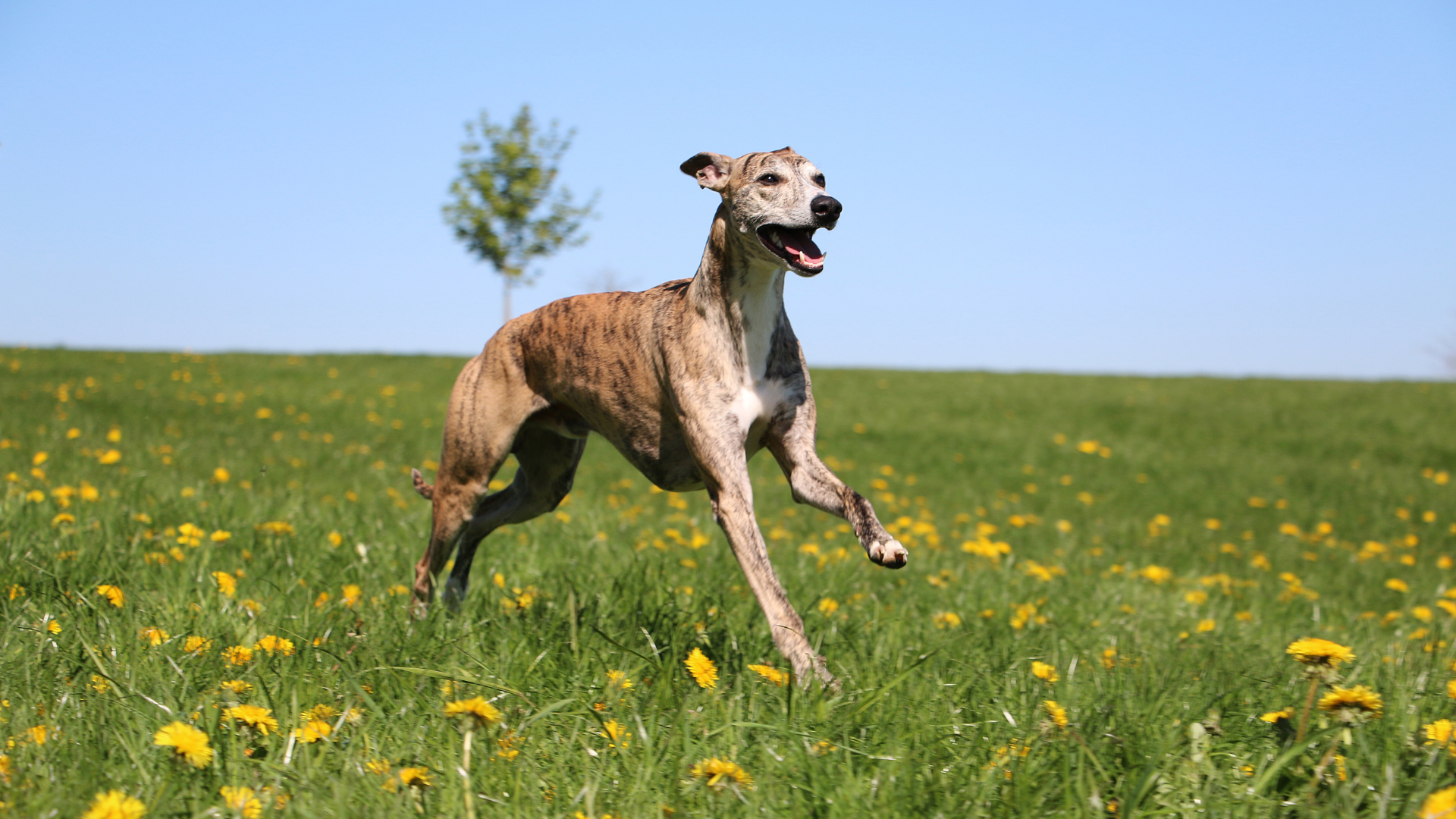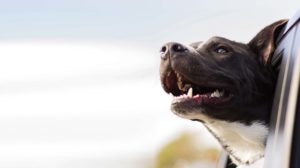Introduction
There are images of dogs that have a remarkable resemblance to Greyhounds within the tombs of the Egyptian pyramids and with that they are thought to be the oldest purebred dog. That said, the modern Greyhound is thought to have origins in Europe.
With amazing vision and speed, they served as assistant hunters and companions throughout the ages, before becoming racing dogs. With increased attention on Greyhound racing industry practices, more and more Greyhounds are being retired into the role of companion, a role that they are very well suited to.
Appearance and Personality
Greyhounds are a large, lean and muscular dog weighing between 25 to 40kgs and with heights up to 76 cm. Females are usually smaller than males. They come in all colours such as black, white, brown, tan, brindle, and combinations of colours. Greyhounds have a very short, soft coat that sheds. Minimal grooming is required, but weekly brushing with a grooming mitt will help distribute natural oils through the coat as well as stimulate blood flow to the skin.
Despite their reputation of being the fastest dog, Greyhounds are surprisingly lazy. They value exercise but were bred to do short sprints, so tend not to have a lot of stamina. As puppies they can be quite rambunctious and benefit from training. As adults, they are often placid and can be quite timid with strangers. As sight hounds with an instinct for hunting, it is important to take care if introducing them to other small animals and may not be the right dog for a household with other small pets such as cats, guinea pigs or birds. They often do enjoy the company of other dogs. They generally aren’t very noisy and if receiving appropriate exercise, attention and toys can live quite happily in apartments.
Common Health Concerns
Greyhounds are susceptible to gastrointestinal issues including canine haemorrhagic gastroenteritis, colitis as well as diarrhoea and vomiting. As a large breed dog with a deep chest, Greyhounds are also susceptible to gastric dilatation-volvulus (GDV). This is a life-threatening condition where the stomach becomes bloated with food and gas.
Arthritis is common as the Greyhound ages, particularly if they have been racing dogs in the past. Greyhounds are also prone to various cancers, predominantly osteosarcomas (bone cancer) which is often noticed due to limping.
The five most common reasons for a Greyhound to visit the vet (excluding routine care visits) according to PetSure data (from 2020) include:
| Rank | Condition | Average cost for single treatment (average pet insurance claim amount) | Highest cost for single treatment (highest pet insurance claim seen for this condition) |
| 1 | Traumatic injury (laceration, claw injury, bite injury, bone fracture) | $391 | $7,137 |
| 2 | Musculoskeletal pain | $306 | $4,398 |
| 3 | Gastrointestinal disease (diarrhoea, gastritis, vomiting, Canine Haemorrhagic Gastroenteritis) | $316 | $4,416 |
| 4 | Arthritis | $177 | $8,662 |
| 5 | Neoplasia (osteosarcoma- bone cancer) | $539 | $13,381 |
Disclaimer: Reimbursement for these claims would be subject to limits, such as annual benefit limits or sub-limits, benefit percentage, applicable waiting periods and any applicable excess. Cover is subject to the policy terms and conditions. You should consider the relevant Product Disclosure Statement or policy wording available from the relevant provider.
For the same period (2020 calendar year), the top five highest single vet treatments (or highest pet insurance claims) for Greyhounds from PetSure data were:
| Rank | Condition | Highest Cost of treatment for condition (average pet insurance claim amount) |
| 1 | Soft tissue sarcoma | $13,381 |
| 2 | Osteosarcoma | $11,971 |
| 3 | Intervertebral disc rupture | $8,900 |
| 4 | Immune-mediated polyarthritis | $8,662 |
| 5 | Pyometra | $8,344 |
Disclaimer: Reimbursement for these claims would be subject to limits, such as annual benefit limits or sub-limits, benefit percentage, applicable waiting periods and any applicable excess. Cover is subject to the policy terms and conditions. You should consider the relevant Product Disclosure Statement or policy wording available from the relevant provider.
Most popular Greyhound names according to PetSure 2020 calendar year data:
Most popular names
- Simba
- Apollo
- Ava
- Bailey
- Bella
- Ben
- Billy
- Captain
- Cocoa
- Connie
Most popular female names
- Ava
- Bella
- Cocoa
- Connie
- Ellie
- Lily
- Maisie
- Olive
- Pixie
- Suki
Most popular male names:
- Simba
- Apollo
- Bailey
- Ben
- Billy
- Captain
- Dobby
- Herbie
- Larry
- Marty
Did you know?
Greyhounds were dogs of nobility during the Middle Ages, and “commoners” weren’t allowed to own one!
References
- American Kennel Club, Greyhound, accessed on 11/11/20, available at: https://www.akc.org/dog-breeds/greyhound/
- Wikipedia, Greyhound, accessed on 11/11/20, available at: https://en.wikipedia.org/wiki/Greyhound
- Jeffers, J, Fast Friends Greyhound Adoption of California, Inc, accessed on 11/11/20 and available from: https://www.fastfriends.org/history-of-greyhounds
Pet insurance can help by covering a portion of the eligible vet bill if the unexpected happens. Because it is difficult to predict the costs of veterinary care, it can help to have measures in place to help prepare for the unexpected. Check out our partner network and explore our policy tools to find a pet insurance policy.
Not all conditions or items are covered by Pet Insurance. Refer to the applicable Product Disclosure Statement for information about coverage and exclusions.








